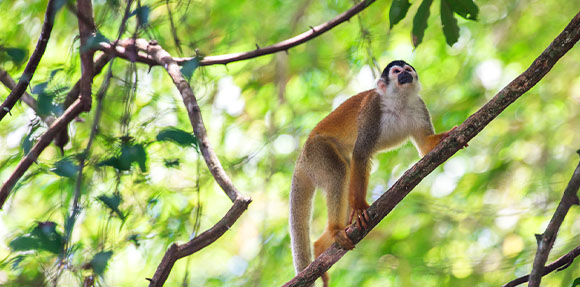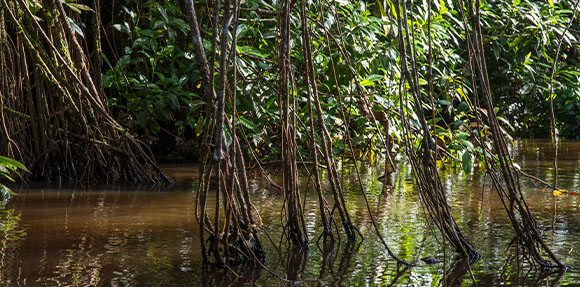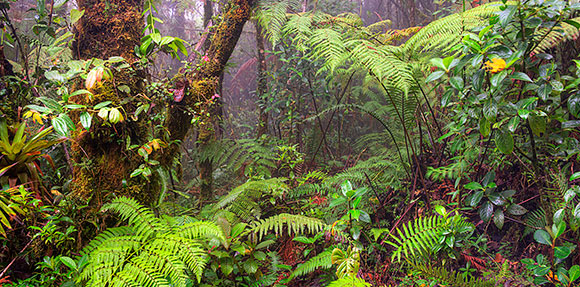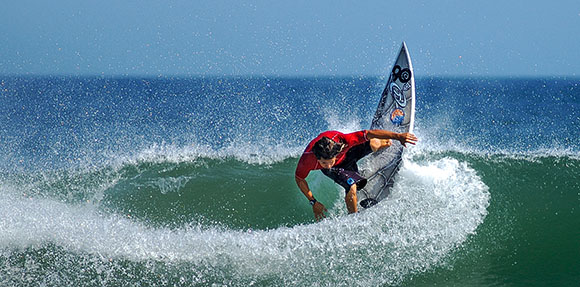What Makes Costa Rica Unique?



Costa Rica is such a small country that it covers just 0.03% of the planet’s surface, yet it surprisingly ranks among the top 20 countries with the greatest biodiversity in the world. This means that in Costa Rica, you can find more species per 1,000 km² than in other countries like Brazil or Colombia.
Take Brazil as an example: although it is 166.6 times larger than Costa Rica, it averages 6.5 plant species, 0.2 bird species, and 0.05 mammal species per 1,000 km². In contrast, Costa Rica boasts 234.8 plant species, 16.9 bird species, and 4.6 mammal species within the same area.
With just 51,100 km², Costa Rica is home to approximately one million species, representing 6% of the world’s biodiversity.
Are you ready to explore it?
The Wonders of Fire
Located on the Pacific Ring of Fire, Costa Rica is home to some of the most impressive volcanoes on the planet.
The land we know today is the result of intense volcanic activity that began 75 million years ago and continues to the present.
Considering every crater where an eruption has occurred, Costa Rica boasts an astounding total of 112 volcanoes. Many of these are part of national parks that protect unique and attractive ecosystems.
One of the most notable is the Arenal Volcano, recognized as one of the top 10 most active volcanoes in the world. This imposing volcano often dazzles visitors with displays of smoke and glowing lava flowing down its slopes, accompanied by avalanching rocks and thunderous sounds from within. These lava flows can reach speeds of up to 70 kilometers per hour and temperatures of 1,000 degrees Celsius.
The Arenal Volcano had its last major eruption in 1968. Until then, it was thought to be just another peak in the Guanacaste Volcanic Range. In 1994, it was declared a national park, and today, its hot springs are a major attraction, along with spectacular landscapes, natural trails, and exciting adventure activities.

The Rainiest Forest in Costa Rica
The La Amistad International Park (PILA) is not only the largest natural reserve in Costa Rica, covering approximately 200,000 hectares, but also the only binational park established jointly by the governments of Costa Rica and Panama in 1982. This is where its name, “La Amistad” (The Friendship), comes from. Altogether, this vast protected area spans nearly 400,000 hectares between both countries, encompassing a variety of humid and cloud forests on both the Pacific and Atlantic sides, as well as indigenous territories.
The Talamanca region, which covers a large part of the park, served as a refuge during the colonial era for indigenous people who resisted the oppression of the Spanish colonizers. The isolation of this region, due to its challenging geography, allowed its inhabitants to preserve many of their ancestral traditions and customs.
The park is home to critically endangered species, such as the jaguar—the largest feline in the Americas and the third largest in the world—along with a rich diversity of wildlife. Here, you can find 400 species of birds, 263 species of amphibians and reptiles, and 213 species of mammals. Moreover, many other species that inhabit this gigantic rainforest are found nowhere else on the planet.

Costa Rica: A Favorite Surfing Destination
It seems that every surfer who visits Costa Rica agrees that it is one of the best surfing destinations in the world. It’s no coincidence that the country has established itself as the third most popular destination for this sport, after Hawaii and Indonesia. The reasons are clear: beaches with exceptional waves year-round, pleasant weather, warm waters, friendly people, and affordable prices.
Last year, Costa Rica even hosted the Billabong World Surfing Games 2009, the world’s largest surfing competition, with participants from 35 countries.
Additionally, Costa Rica is one of the few places in the world where two major oceans are just six hours apart. This allows surfers to enjoy the Pacific’s waves at sunrise and end the day riding the Atlantic’s waves at sunset. Undoubtedly, a true paradise for surf lovers!

A Volcano in the Capital
The Irazú Volcano, historically the most active in Costa Rica, is also the most imposing neighbor of San José. Located just 30 kilometers from the capital’s center, this giant rises to 3,432 meters above sea level. Thanks to its height, on a clear day, it’s possible to see both the Pacific Ocean and the Caribbean Sea from its summit.
Declared a national park in 1955, the Irazú Volcano has five craters. Its name comes from the indigenous word “Istarú,” meaning “mountain of tremor and fire.” Despite being the highest volcano in the country, its summit is easily accessible by a simple vehicle, making it a very accessible destination for all types of visitors.
In the main crater of Irazú lies a sulfurous lagoon with an impressive turquoise color, over one kilometer in diameter and 300 meters deep. This lagoon has an average temperature of 35 degrees Celsius, reaching up to 70 degrees in areas near the fumaroles. The volcano’s summit is covered by interesting páramo vegetation, including small shrubs and a broad, semi-desert landscape that resembles the lunar surface.
The journey to Irazú is a relaxing drive through fertile farmlands and stunning landscapes. The first recorded eruption of the volcano occurred in 1732.


